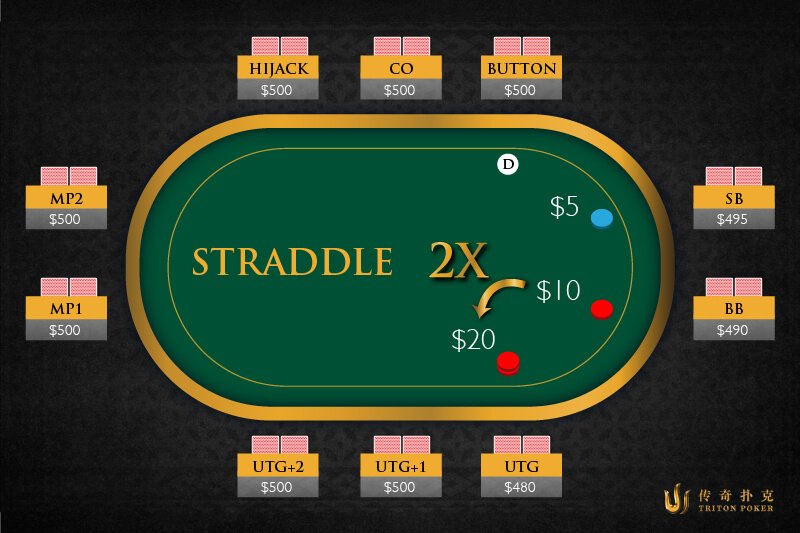- Texas Holdem Limit Rules
- Texas Holdem Minimum Raise
- Texas Holdem Buy In Rules
- Texas Hold Em Betting Rules
No Limit Hold'em 19 No Limit Raise Rules 20 Acting Out of Turn on a No-Limit Game 20 Kill Pots 21 Poker Hand Rankings 21-22 Glossary of Poker Terminology 22-25. Placed by the Player who is under the gun (first to act after the big blind). Kaya artemis resort & casino cyprus. Slots 7 no deposit bonus codes 2020. The straddle must be double the big blind and announced or placed before the first card is dealt. New mexico casino. Under normal circumstances, all other players still in the pot must either call the full amount of the bet or raise if they wish remain in, the only exceptions being when a player does not have sufficient stake remaining to call the full amount of the bet (in which case they may either call with their remaining stake to go 'all-in' or fold) or when the player is already all-in.
- To increase the amount of the bet.
- Indeed, in general your main strategy should be to raise pre-flop when you're UTG; especially when playing Limit Hold'em because the pressure you can exert on someone with a raise is significantly.
- In No Limit Hold 'Em, there may be an unlimited number of raises. In Limit Hold 'Em, there is a cap on the number of raises, usually 3. Your mileage may vary. In Limit Hold 'Em, a lot of times there is no upper limit to the number of chips you can bring to the table.
When you are facing a bet from another player, you will typically have the option to fold, call, or raise. If you 'fold' it means that you throw your hand away and concede the pot to the other players who remain in the hand. This is your best option if you do not want to match the wager your opponent has bet. If you 'call' it means you match the wager that your opponent bet. This gives you the right to proceed in the hand. If you raise, it means you increase the current wager by an amount that constitutes a legal raise, as defined by house rules. House rules regarding raising can vary from poker room to poker room. Rules pertaining to raising also differ between games with structured betting and those with unstructured betting.
In a Limit Holdem Game, the betting is structured. This means that the size of the bets and raises on each betting round are dictated by the stakes of the game. For example a $3/$6 Limit Hold'em game would have a $3 small bet and a $6 big bet, and bets and raises would be required to be in exactly those amounts. In No-Limit and Pot Limit Hold'em, the betting is unstructured. This means that in No-Limit play, a player may bet any amount equal to or greater than the minimum established wager, up to their entire stack, and in Pot-Limit play, a player may bet any amount equal to or greater than the minimum established wager, up to the size of the pot. In these games, the minimum wager is established by the amount of the big blind. This remains the minimum wager throughout the hand until a player increases it.


- Indeed, in general your main strategy should be to raise pre-flop when you're UTG; especially when playing Limit Hold'em because the pressure you can exert on someone with a raise is significantly.
- In No Limit Hold 'Em, there may be an unlimited number of raises. In Limit Hold 'Em, there is a cap on the number of raises, usually 3. Your mileage may vary. In Limit Hold 'Em, a lot of times there is no upper limit to the number of chips you can bring to the table.
When you are facing a bet from another player, you will typically have the option to fold, call, or raise. If you 'fold' it means that you throw your hand away and concede the pot to the other players who remain in the hand. This is your best option if you do not want to match the wager your opponent has bet. If you 'call' it means you match the wager that your opponent bet. This gives you the right to proceed in the hand. If you raise, it means you increase the current wager by an amount that constitutes a legal raise, as defined by house rules. House rules regarding raising can vary from poker room to poker room. Rules pertaining to raising also differ between games with structured betting and those with unstructured betting.
In a Limit Holdem Game, the betting is structured. This means that the size of the bets and raises on each betting round are dictated by the stakes of the game. For example a $3/$6 Limit Hold'em game would have a $3 small bet and a $6 big bet, and bets and raises would be required to be in exactly those amounts. In No-Limit and Pot Limit Hold'em, the betting is unstructured. This means that in No-Limit play, a player may bet any amount equal to or greater than the minimum established wager, up to their entire stack, and in Pot-Limit play, a player may bet any amount equal to or greater than the minimum established wager, up to the size of the pot. In these games, the minimum wager is established by the amount of the big blind. This remains the minimum wager throughout the hand until a player increases it.
Rules regarding raising can get a little tricky, especially for games with unstructured betting. In most poker rooms, the raise rule for No-Limit and Pot-Limit play would be phrased something like 'In order to constitute a legal raise, the increase in the wager must be equal to or greater than the amount of the previous bet or raise.' The problem is that the 'previous bet or raise' amount may only be a part of the wager you are currently facing. That is because the 'previous bet or raise' amount is only the amount added to the current wager by the last player to bet or raise. If there was no previous action on a betting round, then a player's bet will establish the minimum wager for that betting round, an be the entire amount of the current wager. Often, this will not be the case, and the current wager will also include blind bets or earlier action from the same betting round. In the traditional raise rule, the minimum raise requirement is based only on the action of the last player to bet or raise.
Consider the following, in a $5/$10 blind No-Limit Hold'em game, a player raises to $20 before the flop. This constitutes a legal raise because the increase is 'equal to or greater than the amount of the previous bet or raise.' In this case, the previous bet or raise was the $10 blind bet. In order to make a legal raise, the raise had to increase the wager by at least the amount established by the big blind, or $10. Our player's raise to $20 consists of a $10 call and a $10 raise, which constitutes a legal raise. Now, the total amount of the current wager is $20, but the previous player only raised $10. In this situation, the amount of the minimum established wager has not been changed, it remains at $10. Under the traditional raise rule, if a third player wanted to reraise, they would have to increase the wager by at least the minimum established amount, or $10. If our third player wanted to reraise the minimum amount, he would make it $30 to go, which would consist of a $20 call and a $10 raise. But, the game is No-Limit, and our third player elects to raise more than the minimum. He makes it $40 to go, which can be broken down into a $20 call and a $20 raise. The rules of No-Limit Hold'em state that the minimum bet amount, once established for a particular betting round, cannot be regressive. In other words, the minimum bet for any particular betting round can only stay the same or increase, it can never decrease. When our third player made it $40 to go, his $20 raise increased the minimum wager from $10 to $20. This means that if the initial raiser wanted to reraise when the action got back to him, he would have to make it a minimum of $60 to go, consisting of a $40 call and a $20 raise. Of course, that would be the minimum reraise, but since we are playing No-Limit, he could theoretically bet up to his entire stack. On subsequent betting rounds, the minimum wager reverts back to its initial amount of $10, as established by the size of the big blind. Increases to the minimum wager do not carry over from betting round to betting round.
Texas Holdem Limit Rules
Since this can all be a little confusing, some clubs have implemented a simplified raising rule that states that a legal raise must be 'equal to or greater than the entire amount of the current wager.' With the simplified raise rule, the amount that the previous actor bet or raised is irrelevant. Here, the minimum wager is set at the entire amount of the current wager, including all prior action. This is done for simplicity's sake, so that the current wager need not be broken down into a call amount and a raise amount. Consider the previous situation where we were playing $5/$10 blind No-Limit Holdem, and a player raised and made it $20 to go. Under the simplified raise rule, the minimum wager is now established at $20, the amount of the current wager. In this situation, if our third player wanted to raise, he would have to make it a minimum of $40 to go, because he would have to at least double the current wager, whereas with the other, more traditional raise rule, he could have made it a minimum of $30. With the simplified raise rule, if the initial player wanted to reraise the $40, he would have to make it a minimum of $80 to go. You can see that with this simplified raise rule, the minimum wager will tend to increase more often than with the tradition raise rule we discussed previously. Many poker purists consider this simplified raise rule a bastardization of the rules of play, and dislike it intensely.
Texas Holdem Minimum Raise
Usage: Raise it Up, I Raise, Check Raise, Check Raised, Raised Preflop
Previous Poker Term: Rainbow
